| |
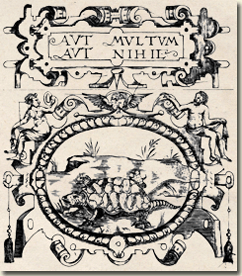
Borja, Empresas morales, Brussels 1680. First part, Emblem 2 (Aut
multum, aut nihil). Cf. Silva 1.
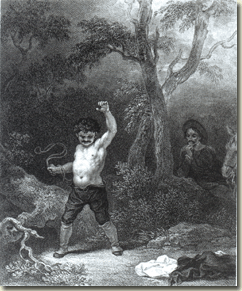
Sancho’s Whipping (II.71)
R. Golding, after the
drawing of Robert Smirke (1752 – 1845) — Cf.
Silva 6.
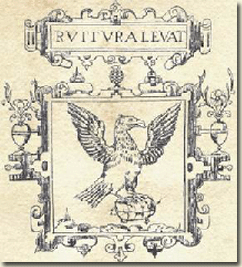
Borja, Empresas morales, Brussels 1680. Second part,
Emblem 52 (Ruitura levat)
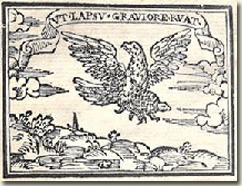
Sebastián de Covarrubias, Emblemas morales, Madrid 1610,
Emblem 1.44 (Ut lapsu graviore ruat)
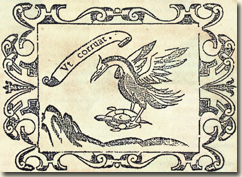
Juan Francisco de Villava, Empresas espirituales y morales,
Baeza 1613 (Ut corruat)
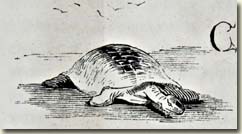
To this point, we have found only one edition of Don Quixote
that contains the graphical image of the turtle in relation to this
episode.
It is found in the French translation L’ingenieux hidalgo don
Quichotte de la Manche, Paris: Dubochet, J. J. et Cie. 1836-37.
Vol. II, p. 549 (signed by Tony Johannot).
The interested reader will find many other images related to Don
Quixote by visiting these webpages:
http://www.csdl.tamu.edu/cervantes/V2/
images/intro-spa.html
http://www.qbi2005.com
|
| |
I would like to offer a modest
contribution to the entertaining comments of this section.
Since turtles
have been mentioned in these two Silvas and in view of the
fact that a sentence from the 1615 Quixote has been
the object of commentary, I would like to offer for your
consideration the moment in which Sancho himself is
converted into a turtle.
This happens towards
the end of his governance, when – for the burlesque battle in defense
of the invading enemies – his island subjects “arm” him with two
shields that prevent him from moving and make him fall to the
ground, at which point they all step on him and feign a fierce
struggle. That was certainly the motive behind the trick they played
on the governor: to humble the prideful man who had been elevated
high above his condition, to castigate the man who had attempted to
usurp positions that were rightfully the domain of the noble and
powerful. For these reasons the image of Sancho is so interesting.
In the words of the narrator: "He lay there like a giant turtle
enclosed and covered by its shells..." (II, 53, 806, Grossman
translation) 1 and then he adds that the only thing that Sancho could do to
protect himself was to retract his head and arms under cover of the
shields in a gesture typical of how the turtle withdraws into its
shell.
Therefore the peasant-squire who wished to govern becomes a
tortoise. And such a comparison is not devoid of symbolic meanings,
since an emblem repeated in three important Spanish collections,
those of Juan de Borja, Sebastián de Covarrubias and Francisco de
Villava, represents the concept of the punishment of excessive
ambition by means of the eagle that carries in its beak a turtle in
order to drop it from on high and smash it to pieces against a rock
below. Borja’s commentary says:
…pues lo que más sube es
para dar con ello mayor cayda, como se vee en esta empresa del
águila con el galápago, que cuanto más alto le sube, es para
hacerle mejor pedazos, y çevarse en él, como dice la letra:
ruitura levat (levanta para una mayor caída)
2 [Enciclopedia, 3 Nº 45]
[...since that which climbs
highest will suffer the greatest fall, as is seen in this impresa
of the eagle with the tortoise. For the higher it goes, the better
to smash it to pieces and feast on it, as the motto indicates:
ruitura levat (it rises for a greater fall)]
The commentary of Covarrubias
reads:
Nuestro emblema alude al
temor con que ha de estar, el que en las uñas del águila, que es
el Príncipe, sube a grande privanza, porque si le disgusta le
dexará caer delo alto sobre los peñascos, donde se quebrante y
perezca. La letra es: Ut lapsu graviore ruat (para que se
despeñe con más pesada caída) [Enciclopedia, Nº 62]
[Our emblem alludes to the fear that should strike he who, in the
talons of the eagle, who is the Prince, rises to be his royal
favorite, for if he displeases the Prince, he will drop him from the
heights down to the crags below, where he will shatter and perish.
The motto is: Ut lapsu graviore ruat (so that he will crash down
with a heavier fall)].
Villava gives his
impresa the motto Ut corruat (so that it may fall)
and he elucidates several examples of:
Los que ambiciosamente han
subido a dignidades o las poseen con soberbia y arrogancia,
permite Dios muchas vezes que caygan de su estado y se pierdan
(…) Y asi al altivo derribado se le da esta Empresa. [Enciclopedia,
Nº 55]
[Those
who have risen to great dignities ambitiously or who possess them
with haughtiness and arrogance, often are permitted by God to fall
from their position and perish (…) And thus this Impresa is given to
the mighty who have fallen]
The analogy with
what is happening in the text of Don Quixote is clear
with respect to the movements of ascent and descent that
Sancho’s character suffers. Elevated by the duke and duchess,
the powerful, (compared to the eagle by emblem authors) Sancho,
by means of cruel tricks and deceit, is made to fall into
opprobrium and general humiliation by them, in order to punish
his impertinent ambition.
It is precisely this
notion of elevating himself for his own perdition that Sancho
expresses when he abandons government, displaying an elevated degree
of lucidity and self-knowledge. Turning
to dapple, he says:
después que os dejé y me
subí sobre las torres de la ambición y de la soberbia, se me han
entrado por el alma adentro mil miserias, mil trabajos y cuatro
mil desasosiegos. (II, 53, 811)
[“but
after I left you and climbed the towers of ambition and pride, a
thousand miseries, a thousand troubles, and four thousand worries
have entered deep into my soul.” (II, 53, 807, Grossman translation)]
Quédense en esta caballeriza las
alas de la hormiga, que me levantaron en el aire para que me
comiesen vencejos y otros pájaros, y volvámonos a andar por el suelo
con pie llano… (Ibid., 812)
[“Here
in this stable I’ll leave the wings on the ant that carried me into
the air where the martins and other birds could eat me, and I’ll go
back to walking on my feet and level ground…” (Ibid, 808)]
The refrain of the
ant who sprouted wings appeared previously in the conversation
with the duchess in chapter 33 («Por su mal le nacieron alas a
la hormiga» [“It did him harm when the ant grew wings” Grossman,
679]), and here Sancho recalls it again, however, it is curious
that he adds a new ending to the original. It is not «para que
se pierdan más aína» [“so that they are lost all the more
quickly”], as Correas registers in his Vocabulario de
refranes y frases proverbiales, (ed. Louis Combet revised by
Robert Jammes and Maïte Mir-Andreu, Castalia, Madrid, 2000, s.v.
hormiga) nor as Mexia completes the refrain in his Silva de
varia lección, Por su mal le nacieron alas a la hormiga...
«porque, con ellas, el viento las desbarata» [“because with
them, the wind destroys them”] (ed. Antonio Castro, Madrid:
Cátedra, 1990, p. 357), rather, he completes it by saying that
the wings only resulted in the ant being devoured by martins and
other birds. Once again, this elaborates on the notion of ascent
only to be destroyed by the powerful, in this case the birds,
who are the legitimate inhabitants of the airs, in contrast to
the ants, who should remain on the ground.
Without doubt, the
onerous tricks that are played on Sancho on his island kingdom,
planned out not only for the entertainment of the duke and duchess
and their court dwellers, but also, and especially to “put in his
proper place” the humble peasant who tried to be a governor, wind up
undeceiving the squire. And they lead him to conclude, just like the
turtle, that there is nowhere better than one’s own home, according
to the well-known fable repeated by Borja in the First Part of his
Empresas morales [Domus optima]. [Enciclopedia, Nº
1618]
For us as readers. It
is interesting to observe the unfolding of veiled allusions, such as
that of Sancho converted into a tortoise, which fill the text with
symbolic meanings and reveal the complexity of the Cervantine art of
representation.
Notas
1 I quote the Quijote
from the edition by Celina Sabor de Cortazar and Isaías Lerner, Buenos
Aires, Eudeba, 2005 (2ª edición). For the English texts, we have
utilized Edith Grossman’s Don Quixote (New York: HarperCollins.
2003)
2
This emblem belongs to the second part of the collection, that is to
say, the part added by the author’s grandson in 1680 which incorporated
emblems in manuscript form that were supposedly omitted from the
original of 1581. Nevertheless, the presence of other emblem authors
contemporaneous with Cervantes, allows us to corroborate the presence of
the image in the imagery of the period, in spite of the temporal
distance between the emblem’s publication and Don Quixote of
1615.
3
Antonio Bernat Vistarini and John T. Cull (ed), Enciclopedia de Emblemas Españoles,
Madrid 1999.
|